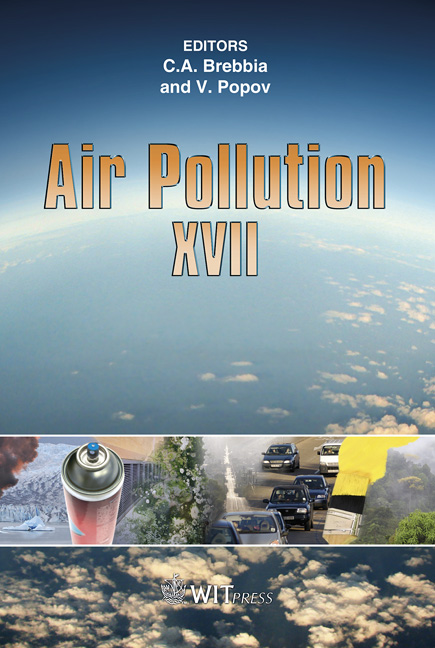Atmosphere Environment Improvement In Tokyo By Vehicle Exhaust Purification
Price
Free (open access)
Transaction
Volume
123
Pages
11
Page Range
129 - 139
Published
2009
Size
1,421 kb
Paper DOI
10.2495/AIR090121
Copyright
WIT Press
Author(s)
H. Minoura, K. Takahashi, J. C. Chow & J. G. Watson
Abstract
In Japan, PM regulations in diesel automobile emissions started in 1994. Longterm measurements of suspended particulate matter (SPM, <7 µm), PMfine (<2.1 µm), and PMcoarse (2.1 to 7 µm) were obtained from an urban Kudan site in downtown Tokyo from 1994 to 2004 to evaluate the effects of emission reduction measures. A remarkable PM mass downward trend was found from 1996 onwards, especially in the PMfine fraction, which decreased at a rate of 2.09 µg m-3 yr-1. The decrease in PMfine is attributable to the decreases in elemental carbon (EC) at the rate of 0.82 µg m-3 yr-1. PMfine EC concentrations at the roadside Noge site shows a threefold faster downward trend, at the rate of 2.56 µg m-3 yr-1. This decrease is consistent with fleet penetration of engines and fuels that complied with a stringent Japanese emission reduction limit which began to take effect in 1994. It is apparent that vehicle emission reduction contributed to air quality improvement in Tokyo. The levelling off of the EC reductions since 2005 may be explained by the results from the carbon isotope (14C) analysis, which suggested contributions from biomass combustion sources in addition to vehicle emissions in downtown Tokyo. Keywords: Japan, Tokyo, trends, particulate matter, chemical composition, elemental carbon, biomass combustion.Keywords
Japan, Tokyo, trends, particulate matter, chemical composition, elemental carbon, biomass combustion





